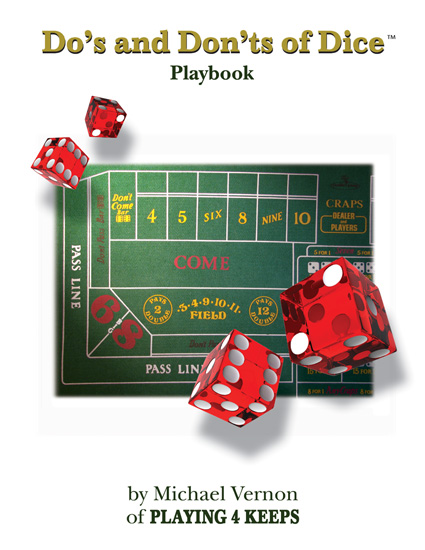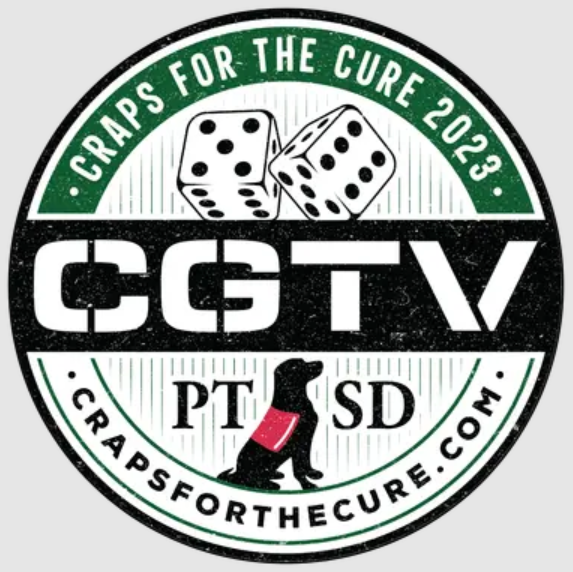I Use Sunflowers-Up
One of the most frequent questions I am asked when it comes to the mechanics of the toss is: What dice set do you use during a craps game?
While I am by no means an expert in the art of set selection, I do have a certain number of sets I have confidently used for over 10 years that translate into positive financial results.
Most of the time I utilize what dice influencers refer to as the Hardway set and lot of players are surprised when I tell them it is my go-to set. In workshops I generally demonstrate my toss utilizing this set. What surprises most is that I also rely on this set during live sessions. I use this set in a game about 70 percent of the time.
While many students of dice influencing will argue that this particular set is meant for the beginner or intermediate player, I have always liked to start my sessions with this particular set because it compliments my game. Rather than calling this a beginner to intermediate shooter’s set, I like to think of it as an informational set. If you play a craps session with me, you will quickly understand why.
With hard ten- sunflowers- facing up and hard eight facing me, I can obtain vital information from the come-out roll when I am the shooter. Once I toss the dice, astute players can also gather information about what my dice are doing without me having to verbally share whether my dice are rotating on axis, double pitching or if one die is off axis. All they have to do is look at the outcome and know whether I am on target or not. By observing subsequent numbers, players will also know that I am able to diagnose and correct a mechanical problem when the next toss is thrown.
Here is a good example of what might happen when I am the shooter. On my come-out toss utilizing the Hardway set, I roll a seven, 5-2. Hooray for the pass line bettors but no hooray for me. The outcome tells me I have to make a grip adjustment due to double pitch. Okay, the next roll I toss is an eleven, 6-5. Hooray for the pass line bettor who has parlayed the initial payout. As the random players are celebrating the fact that they have been paid twice on the come-out roll, I have to contemplate yet another adjustment due to one die being off axis. My next roll turns out to be a hard ten. Now I am a bit more confident about my toss and can proceed. This set gives me, and other savvy players who practice this art, significant information.
I play for longevity. By that I mean that I employ a betting strategy that capitalizes on lengthening the number of rolls beyond random before our uninvited friend- the 7 - rolls around. Information I gather from a Hardway set toss allows me to make physical adjustments in my grip and throw to accomplish this.
Back in the late 1990’s, I was first introduced to the Hardway set by Chris Pawlicki, an author, lead instructor and engineer for a group of like-minded dice influencers and advantage players called PARR, with Jerry Patterson as its founder. While there may be players who may disagree about who started the whole dice influence revolution, it was in Chris’s workshop that I was first introduced to the Hardway set. Chris explained the theory behind the set, showing me why this set was, at least for me, the safest set I could utilize at the craps table.
While I know that many experienced players rely primarily on the 3 V dice set or a variation there of, I have always subscribed to Chris’s theory about the degrees of freedom with regards to range of motion with this particular set. He forced me to focus on how the dice behave in flight. With this set, I am able to get a lot of protection if my dice are only one face off in any rotational direction. And with this set I will get paying numbers. For 3V set users, if the dice roll or yaw just one face off, there is a higher probability that the shooter is facing the end of their turn. Again, with a Hardway set, I have to be two faces off before I see a seven. (Pick up a pair of dice to physically see what I am describing here.)
I encourage all players who practice the art of mechanically influencing the dice to analyze their throw during every session. If, in an ideal playing session, the dice stay on axis, hit the table surface, maintain their axis as they come to rest, then by all means, use the 3 V or 2 V set depending on your targeted number. Still, if you are a shooter that has any movement with their dice, such as staying on axis or a roll or yaw with your toss, then try switching over to Sunflowers –up. It may offer you greater longevity at the table.
One thing that I do recognize is that most of my sessions are not played under ideal circumstances. Sometimes the uglier the toss, the greater potential for a monster break-out hand. Profit does not always follow Perfection – ironic isn’t it? There are always a number of factors and variables that make up a successful session.
The mechanics of a dice toss plays a very small part in making sure a player leaves a session on the positive side. It is therefore so important to know yourself. Be properly bankrolled, have a betting plan and toss with confidence for your desired outcome. What works great for me, may not work as well for the next player. We all play with different intentions. I always encourage the player to explore safe sets that offer protection and work for them during live play.
There are other dice sets I have successfully utilized such as the “Kissing Aces” “Straight Sixes” and “All Sevens”. They each have a purpose and I will use them for specific situations during my turn with the dice.
Using the Hardway set, even though I am far from being considered a beginner, is justified by its usefulness in determining the tweaking needed to improve my toss. It is my foundational set for all around bankroll protection while playing my game- because I recognize that my toss is not perfect 100 percent of the time.
It is very basic, yet it works for me.
Soft Touch











